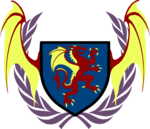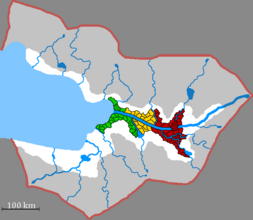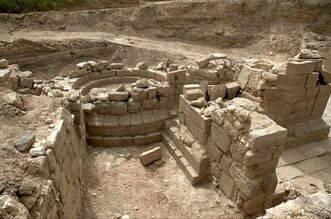Vrigny (Pacifica)
Fourth Republic of Vrigny Verten Rexpublik Vrigny | |
|---|---|
Motto: Bar ev dett, Rexpublik! Rise and fall, Republic! | |
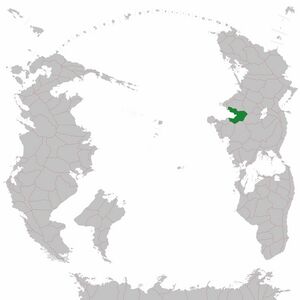 | |
| Capital and largest city | Adleimen |
| Official languages | Vrignyan
|
| Religion (2024) | 98.8% non-religious
1% Zarkanxiz 0.2% Other |
| Demonym(s) | Vrignyan |
| Government | Democratic unitary presidential republic |
• President | Anneliese Bow |
• Vicepresident | Leonard Hustigs |
| Legislature | Parliament |
| History | |
• Established | ~4000 BCE |
• First Zarnarchy | ~3400 BCE |
• Vrignyan Revolution | 1801-1812 |
• Vrignyan Civil War | 1903-1908 |
• First Stratocracy | 1921-1932 |
• Third Republic | 1932-1953 |
• Second Stratocracy | 1953-2014 |
• Fourth Vrignyan Republic | 2014-Current |
| Area | |
• Total | 181,276 km2 (69,991 sq mi) |
| Population | |
• 2022 census | 51,237,971 |
• Density | 283/km2 (733.0/sq mi) |
| GDP (PPP) | 2022 estimate |
• Total | $2.386 trillion |
• Per capita | $46,562 |
| GDP (nominal) | 2022 estimate |
• Total | $1.601 trillion |
• Per capita | $31,245 |
| Gini (2022) | low |
| HDI (2023) | very high |
| Currency | Cernic (CRN) |
| Time zone | UTC+2 |
| Date format | dd/mm/yyyy CE |
| Driving side | right |
| Internet TLD | .vy |
Vrigny, oficially the Fourth Republic of Vrigny (Vrignyan: Verten Rexpublik Vrigny) is a medium-sized independent country located in western-central Bailtem. It is bordered by Brodlancia on the southwest, the South Pacific Ocean on the west, Detroxia as well as Sallodesia on the south and Numano on the east. The country is characterized by its tropical weather on the north, and its oceanic climate on the south. Due to this, most of the country's population, urban areas and farms are located on the south, as well as the east. However, due to a history of deforestation and relentless urban expansion, many of the tropical rainforests of the north have been long gone for ages, being replaced by cities, farms and expansive open-pit mines.
Vrigny is a unitary state, without any provinces. With a total area of 181,276 km2 (69,991 sq mi) and a population of 51,237,971, the country has an average population density of 282.65 people/km2 (732 people/sq mi). However, the majority of the population (>80%) lives in the three largest cities of Adleimen, Lifov and Vraks, which have a population of: 32,256,478; 7,215,036 and 3,456,202 respectively. Adleimen, as one of the largest cities in the whole of Pacifica, is the capital of Vrigny. With an area of around 7,200 km2 (sq mi), it is the result of the merging of the former cities of Adlan and Heimen, as a result of an extreme urbanization project led by the previous Dictatorship. This project was frowned upon by many, not because of the large amounts of rainforest cleared for the construction of the cities, but due to the forced resettlement of many rural Vrignyans, accustomed to a peaceful life in their small town, into a more industrialized city full of skyscrapers.
Since the birth of The Fourth Republic in 2014, due to the Constitution written by Samuel Romer and Victor Teryz, the country has been a democratic presidential and constitutional republic, however, until the elaboration of the current, "truly democratic" Constitution, elaborated by the SPV and LPV, Vrigny's democracy was a barely-functional two-party system, which required coalitions to be registered as political parties, and it led to several disagreements of the political sub-groups inside them. With the collapse of the Center Coalition, and later on the Worker's Union, now the independent SPV and LPV transformed Vrigny's democracy into a multiple-party system under proportional representation, and gave the country's only chamber, the Parliament, a total of 425 seats. Vrigny is currently ruled by President Anneliese Bow, from the Green Party of Vrigny (GPV) following its overwhelming victory in the March 24' Snap Elections.
Despite Vrigny's prolonged Dictatorship and isolationism, it mantains a relatively high human development index (HDI) and a decent economy for the size of its population. Vrigny has had an universal public healthcare system since the late Third Republic, and the Dictatorship expanded the public education system as well. The last 10 years of the Fourth Republic have seen a noticeable economic growth and further development of the public sector and services, however, it seems that the nation still remains relatively isolated and has much more potential. The country is a large producer of steel and other refined metals, automobiles, uranium, pharmaceuticals and electronic equipment.
With the country's recent incorporation into the World Forum, its newly established relations with countries all over Pacifica will bring the country's situation into a new era, in which Vrigny will participate with fellow democratic countries and uphold democracy and the Vrignyan view of liberalism all over the world, instead of continuing with its previous prolonged armed neutrality.
Etymology
Vrigny's current name arose after the rise of the Zarkanxiz faith and posterior establishment of the Zarnarchy, around 3400 BCE. It is a shortening of the phrase: Vag raks ig nyn, which is directly translated to: "Long teeth in (this) land". The reason for this phrase is that the Zarkanxiz religion had human sacrifices for the harvesting of blood and the search of an eternal life as its core tenets, leading those which were conquered by the Zarnarchy to name the area controlled by it to describe it by that phrase, and eventually naming it Vrigny as an alternative to Zarkanxiz.
History
Prehistory
Ancient City-States Era (4000 - 3400 BCE)
Since the early 3000s BCE, several city-states and small town-sized civilizations rose and organized on the shores of the large Vengril river, as well as some of its tributaries and the western coast of today's Vrigny. All of these city-states did not share a common culture or language. However, there were three major cultural and linguistical groups: Iregrilo-Benetian, on the eastern regions of the Vengril; Puntian, on the central parts of the Vengril; and Lano-Dustikian, on the western spans of the river.
These three different cultural groups interacted with each other; with cities from the same cultural group mostly forming alliances and trading between each other, and participating in raiding, looting and conquest against those of a differing culture. The prominent city-states at the end of this era are, for the three cultural groups: Iregril and Benet (Iregrilo-Benetian), Punt (Puntian), and Lan and Dustik (Lano-Dustikian). Not much is known about the last two cultural groups, due to the conquest and assimilation campaigns of the Iregrilian Empire around 3400 BCE.
Iregrilo-Benetian.
Puntian.
Lano-Dustikian.The Rise of Zarkanxiz (~3400 BCE)
The Zarkanxiz (Zarnarchy), also known in its early days as the Iregrilian Empire, is estimated to have been established in mid to late 3400 BCE. At this point in the history of the region which now encompasses central Vrigny, the city-state known back then as Iregril (nowaday's Vraks) developed writing, and soon enough, with it the organized religion of Zarkanxiz was founded. Old legends say that the Zarkanxiz faith came to be when the leader of a group of adventurers, Zarkan as well as his closest allies, were blessed trascendence by a Blood Dragon, with the power of giving immortality to those who deserve it in the world.
With the city being an absolute monarchy-of sorts, the king in power during the rise of the Zarkanxiz faith, Arelien, began a campaign to eradicate said religion, as it defied the city's yet older pantheon which was based in several "river deities". This religious purge was brutal. Iregril's army was one of the most powerful and developed out of all the Vengrilian city-states, if not the most powerful of them all. Many of the Zarkanxiz faithful either fled out of Iregril's walls to settle on the outside of the city, or fought against several talented Iregrilian spearmen, unsuccessfully. Lagor, which is considered to be the Zarkanxiz faith's prophet, organized a large group of followers (~10k), as well as Zarkanxiz Iregrilian soldiers (5k) and led the March of the Fifteen against King Arelien.
Unlike Arelien, Lagor was lowborn. This detail, as well as his charisma, and the spread of many Zarkaniums (Zarkanxiz's Scripture) made the takeover of the Zarkanxiz faith over Iregril inevitable. Despite Arelien's dwindling loyalist forces struggle, soon enough, the King was captured by Zarkanxiz warriors, and the remainder of his forces surrendered. Now, Iregril was under Zarkanxiz control, although it lacked a clear ruler. The Zarkanxiz clergy formed during the March, battle for Iregril and the aftermath, and was composed mostly by literate scribes and warriors. The first ever Raksier was then organized: King Arelien, some of his family members which did not convert and several of his loyal spearmen were sacrificed to Zarkan and the other deities by beheading with a large axe. King Arelien was executed by Lagor himself in order to prove his first victory to Zarkan. In the finalization of the ceremony, Lagor was crowned first ever Zarnarch of the Zarnarchy of Iregril in a ritual which bound Zarkan's control to his mind.
With the Zarkanxiz faith in total control of Iregril, the construction of a large pagan-like temple commenced in the center of Iregril, and the city-state began preparations to attack other nearby city-states to proselytize the Zarkanxiz faith and spread Zarkan's direct control to other regions near the Vengril.
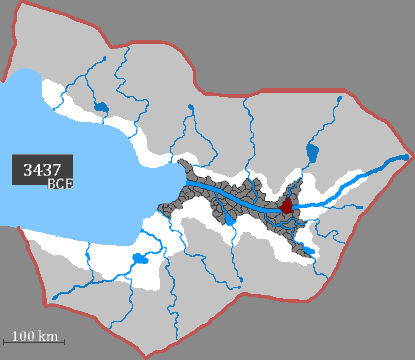
The Zarnarchy
Ancient Zarnarchy
Medieval Zarnarchy
(Insert Wars with Brodlancia and Montacia?)
Modern Zarnarchy
The Final Downfall
The Vrignyan Revolution (1801-1812)
See also: The Vrignyan Revolution (Pacifica)
The start of the 19th century saw a worsening of the already dire economic situation the Zarnarchy found itself in. With the imposition of outright abusive additional taxation, as well as an authoritarian rule by the divine autocracy, a small group of revolutionaries, which had been inspired by the ideas of several Vrignyan Enlightened (anti-Zarnarchic and democratic) philosophers, was formed in 1800. This small group called themselves the Liberalists, and were led mainly by Noah Vuseln, Nick Bisten, Maxim Hures and Jox Ibenin. Although the popularity of the Liberalists was limited at first, due to censorship and prosecution by the Zarkanxiz Inquisition Tribunal (ZIT), the economic and famish situation of the Vrignyan peasantry, as well as general discontent within the Zarkanxiz Military made it soon gain a limited following in the cities of Adlan and Lifov.
The First Republic (1806-1908)
Noah Vuseln's Presidential Dictatorship (1806-1866)
The Purple Genocide
Vrignyan Industrialization
The Aristocratic Republic (1866-1908)
The Vrignyan Civil War (1903-1908)
The Establishment of the SPV
The Second Republic
The First Stratocracy
Ferdinand Lawfen's Coup d'Etat
The MSO plot against Ferdinand Lawfen
The June Revolution
The Third Republic
Dominance of the SPV
The Second Stratocracy
The Generals Revolt
Ferdinand Lawfen's Death
The Fourth Republic
The Writing of the First Constitution
Geography
Climate
The North/South Discrepancy
Hydrology
The Vengril River
Flora
Fauna
Politics
The Fourth Republic of Vrigny is an unitary presidential republic. The current President is Anneliese Bow, and the Vicepresident is Leonard Hustigs. Vrignyan politics is based on the 2023 Constitution, which proclaims the country as a democratic republic, led by a Government elected directly by universal suffrage every four years.
Legislative power is reserved to the 425-member Vrignyan Parliament, in an unicameral system. Said Parliament has the power to legislate Government budget, constitutional amendments and modifications, as well as impeach the Government and call for new elections in extraordinary circumstances.
Government
The Vrignyan Government leads the executive branch and general administration in the Fourth Republic of Vrigny. The Vrignyan Constitution dictates that the Vrignyan Government has to objectively serve the general interests of Vrignyan citizens, and provide universal, public services to the Vrignyan population.
Currently, the Vrignyan Government is led by the Green Party of Vrigny. The Party's Leader, Anneliese Bow was voted President in the March 2024 Snap Elections after Lorena Ballons' resignation and collapse of the SPV-LPV-GPV Coalition Government which had been ruling since 2014.
The Vrignyan President is to direct the Vicepresident, and Ministers and can appoint and dismiss them freely. They are to respond politically to the Vrignyan Parliament for the action and goals of the Government. The impeachment of the President, or their resignation, implies the complete cessation of the Government, and elections will have to be held.
These are the current Ministers in the cabinet of President Anneliese Bow:
- Minister of Internal Security: Victor Zeraz.
- Minister of Economy: Glynn Lyon.
- Minister of Foreign Relations and Trade: Alexandra Shinser.
- Minister of Healthcare and Welfare: Linda Mina.
- Minister of Education and Research: Willem Friene.
- Minister of Industry: Vladim Margnian.
- Minister of Agriculture: Noah Thomas.
- Minister of Culture, Tourism and Sports: Diana Robert.
- Minister of Environment and Ecological Transition: Julius Cyren.
- Minister of Finance: Rosa Margarn.
- Minister of Justice: Roman Lilup.
- Minister of Infrastructure Development, Public Transport and Urbanization: Cristina Garchomp.
- Minister of Defense: Joseph Balein.
- Minister of Work and Social Affairs: Jacob Ferains
Political Parties
See also: List of political parties in Vrigny (Pacifica)
Vrigny is a multi-party democracy that uses a pure proportional representation system to elect 425 representatives in the Vrignyan Parliament. The system is completely centralized, meaning that all representatives represent the country as a whole, as there are no official provinces, or any kind of electoral system that divides the 425 representatives between different provinces or territories.
Vrigny also has an electoral threshold of 1%, meaning that parties that do not achieve 1% or more of the total vote will not get any representatives in the Vrignyan Parliament. Although Vrigny has many different political parties, those most relevant (that have ever achieved more than 1% of total votes) are the following:
- Major Parties: Green Party of Vrigny (GPV), Liberal Party of Vrigny (LPV) and the Socialist Party of Vrigny (SPV).
- Medium Parties: Industrial Syndicalist Party for Worker's Liberation (ISPfWL).
- Minor Parties: Exterior Vrigny Development Party (EVDP), Party For the Animals (PFtA), Conservative Party of Vrigny (CPV) and the Z-D Kresbo.
Foreign Relations
Military
See also: Vrignyan Armed Forces (Pacifica)
The Military Decay
After the end of the Second Vrignyan Stratocracy, the SPV-LPV-GPV Coalition Government led by President Lorena Ballons suddenly slashed the budget for the Vrignyan Armed Forces, which used to be constantly around 7-10% of the Vrignyan GDP, to just under 2% of the GDP. However, the great reduction of funding was not the only difficulty the Vrignyan Armed Forces had to face during the start of the Fourth Republic; military conscription was lifted by Samuel Romer in 2014, during the transition from the Stratocracy to the Republic. This led to a large diminishing of the manpower available to the Vrignyan Military; the army had number of around 2,180,000 personnel, combined for those part of the active and reserve forces. This number fell to around 230,000 a couple of years after the transition (which contributed to the Vrignyan 2014-2016 Unemployment Crisis) and has only continued to fall, due to the lack of confidence, resources and popularity of the Vrignyan Armed Forces among the population.
In the late Lorena Ballons' Government (November 2023), several Vrignyan officers attempted a coup d'Etat against the democratic Government, which saw no success. The officers and their small number of troops were easily stopped by the Vrignyan Internal Security Department (VISD), due to prior knowledge of their intentions. This led to the discharge and jailing of said Vrignyan officers, as well as some others which conspired or took part in the planning process. The main leaders of this coup d'Etat were also the last Vrignyan Citizens to be sentenced and dealt the Death Penalty in the country, before it was completely abolished from Vrignyan Military Justice in early 2024.
Economy

See also: List of Companies of Vrigny (Pacifica)
Vrigny has a social market economy, which mainly consists of industrial activities and is seeing the rise of a developed services sector, thanks to the presence of skilled labor, recent innovation, and a low level of corruption. Vrigny is Pacifica's 21st largest economy in nominal GDP, with a value of $1.601 trillion and has Pacifica's 24th highest nominal GDP per capita $31,245 per capita, which is relatively inferior to other developed economies in the world; however, thanks to much lower living costs in Vrigny, the country's economy could still be considered a developed economy.
The Vrignyan economy is mainly export-oriented, with some of the country's main exports being steel, aluminum, pharmaceuticals, chemicals and clothing. The country's main imports are petroleum, electronics, semiconductors, food and electric vehicles. Despite the large industrial and manufacturing base of the Vrignyan economy, these imports show that there are still many sectors the country's industry could expand to, as the country exports simple goods and imports more complex goods.
Vrigny currently has an unemployment rate of 7%, which is a little high compared to other countries in Pacifica, but it is less than half to the one the country had after the fall of the Stratocracy. The 2014-2016 Unemployment Crisis in Vrigny was caused due to a large restructuring of the country's economy, with the initial privatization of many previously state-owned companies which were founded during the dictatorship, as well as the discharge of over a million Vrignyan conscripts and soldiers from the Vrignyan Armed Forces after the abolishment of the mandatory military service.
Some of the largest Vrignyan companies are Ferrinax, Luminax, Drakull, Flixten, Igurnar, Cexiner and Magutel. All of these companies except Magutel consist of large parts of the Vrignyan industrial sector. The industrial sector contributes around 64% of the total GDP, with the services sector only contributing 33% to the total GDP, and the agricultural sector the remaining 3%.
Many of these Vrignyan companies are included in The Adlan Stock Exchange (ACB), which has existed even since the mid to late days of First Vrignyan Republic, and has a long history of stock exchanges, excluding the days of the Stratocracy. Vrigny has very low amounts of debt; with a ratio of debt to GDP of 8.31%, due to the consistent budget surplus the country has managed to keep, even after the fall of the Stratocracy, by not over-spending way too much and balancing a reasonable amount of funds between the different Vrignyan public sectors.
Infrastructure
The Vrignyan road system is centralized, with all of the country's main highways connecting the 15 cities to the capital city of Adleimen, or the closest city. Additionally, there are highways along the coast (Hern to Brun), the northern cities (Hern, Vimen, Murkan and Dianxe), the eastern cities (Maxi and Rijeke) and the southern cities (Asten, Surn and Aren). The current GDP Government has the objective of replacing most Vrignyan private vehicles with electric vehicles, as soon as possible, with the earliest goal being in 2028, with the main objective of this being to reduce Vrignyan fossil fuel emmissions even further, as well as reducing the country's dependence of petroleum imports.
Vrigny has one of the most extensive high-speed rail networks in Pacifica, with a total of over 3,900 km (2,423 mi) of high-speed tracks, linking all the cities in an intricate network.
Demographics
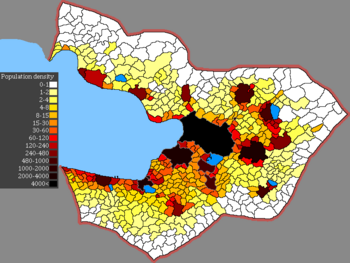
Vrigny has a relatively numerous population of 51,237,971 as of December 2022's census. Despite the country's relative population density of 283/km2 (733.0/sq mi), the absolute majority of Vrignyans live in the country's 15 cities, having Vrigny an urban population percentage of 97.4%. The yearly population growth is around 0.4 to 0.7%, mainly due to natural growth. The average life expectancy at birth in Vrigny is 82.3 years, which has greatly increased in the last 10 years since the fall of the Stratocracy.
Vrigny has experienced a very low amount of immigration since the 1950's due to the authoritarian Stratocracy. Despite the liberal integration laws and facility to obtain Vrignyan citizenship for foreign nationals, until now, Vrigny has not seen a high number of immigrants. Now, with liberal laws, a relaxed view on religion and comparatively affordable housing and free education, Vrigny is an attractive country for immigration.
Cities
See also: List of cities in Vrigny (Pacifica)
As mentioned before, 97.4% of the Vrignyan population lives in urban areas. Vrigny's largest city, Adleimen, accounts for around 63% of the country's total population just on its own, with a population of 32.2 million. The other Vrignyan cities with populations over 1 million are the following: Lifov (7.2 million), Vraks (3.5 million), Sylce (1.8 million) and Dianxe (1.1 million).
Language
Religion
See also: Zarkanxiz (Pacifica), Purple Article (Pacifica)
From Antiquity until the Vrignyan Revolution, in the first decade of the 19th Century, Vrigny was a theocratic elective monarchy under the Zarkanxiz religion, simply called "The Zarnarchy" (Vrignyan: Zarkanxiz). The Zarkanxiz religion firmly controlled the nation, under the leadership of a Zarnarch elected by The Circle, and an Allxervar elected by The Circle as well as lesser priests. During the past, Vrigny was always homogeneously Zarkanxiz, as the Zarnarchy censored, expelled and sacrificed those who didn't practice the Zarkanxiz faith. The only other religions which had a small influence within Vrigny in the past were: Lievvism, among Sedunners who established the city of Brun (Previously in Sedunnic, Pron), until they were expelled and sacrificed by orders of Zarnarch Hektor Garikel in 1607; Christianity and Islam, in a very small proportion.
From early 800 AD up to the end of the Zarnarchy in 1806, the Zarkanxiz Inquisition sought to achieve total religious homogeneity and dominance of the Zarkanxiz faith within Vrigny. This was mainly done by psychological torture, in attempt of a forced conversion, or through the elimination of those denominated to be heretics or heathens by their sacrifice through beheading, which could be done inside of a temple in a normal mass or in special mass-sacrifice festivities. The largest of these festivities were usually celebrated on the 25th of December, mainly to provoke Christians.
With the Vrignyan Revolution, started in 1801, and the establishment of the First Vrignyan Republic in 1806 by hands of Noah Vuseln and the other Vrignyan Revolutionaries after the execution of the last Zarnarch, Erick Hassarn, the Zarkanxiz faith saw its final collapse. The Vrignyan Revolutionaries, following the ideals of enlightened writers, as well as the neglected Vrignyan bourgeoisie, wrote a Republican Constitution, that came into effect in 1806. The Republican Constitution effectively started to code and concretely determine the rights of the Vrignyan nation. Due to the Zarnarchy's neglect and abuse of the Vrignyan people, the radical atheistic wing of the Revolutionary Party (now the LPV) won against the others, culminating in the addition of the Purple Article in the Republican Constitution, which sought to ban the Zarkanxiz religion, and any religion overall to prevent their spread that could "upset Vrignyan culture".
During Noah Vuseln's dictatorship, right after the establishment of the First Vrignyan Republic, the Purple Article was enforced relentlessly. The Zarkanxiz Inquisition was replaced with the Purple Inquisition, which now targeted all Zarkanxiz and other religious groups, forcing their conversion or, if they refused to do so, sentencing them to death. This era is known as the Purple Genocide: pretty much all Zarkanxiz temples were burnt or destroyed, even if they people inside, members of The Circle and all priests were executed, and a guerilla war was fought against more zealous, isolated guerrilla Zarkanxiz groups in south-eastern Vrigny. This Purple Genocide is estimated to have caused the deaths of up to 2.5 million Vrignyans in around 40 years, which is more than double of the deaths caused by the prior Revolution itself.
By Noah Vuseln's death in 1866, religious homogeneity was pretty much achieved in Vrigny, with the number of executions having diminished to almost zero. Vrigny's population was now considered to be completely atheist, and religion was viewed as foreign to the Vrignyan nation. This meant that, revoking the Purple Article was not even considered by Vrignyan political elites and rulers, as it was said that having the article was "no harm, as it didn't affect any Vrignyans". The Purple Article was kept after the Vrignyan Civil War by the Second Vrignyan Republic, and it was de facto enforced in the First Vrignyan Stratocracy, even though it lacked a Constitution. The establishment of the Third Vrignyan Republic saw the rise and dominance of the socialist SPV in Vrignyan Politics, which defended the continuation of the state atheism policy Vrigny had kept up until then. The Second Vrignyan Stratocracy was not too different compared to the First in terms of religion. The Purple Article only saw its demise in early 2024, 10 years after the establishment of the Fourth Vrignyan Republic, being replaced by the New Laicism Article.

Nowadays, Vrigny's population is, due to very clear reasons, mostly non-religious: around 98.8%. Meanwhile, the Zarkanxiz religion still clings to life, being practiced by only around 1% of Vrignyans. Other religions are practiced as well, such as Islam and Christianity, but they compromise the clear minority of considered religious groups in Vrigny: 0.2%. Vrigny does not officially celebrate any religious holidays, and the Government is to not promote any religion or spend public funding for any religious reason, such as the building of temples, as defended by the New Laicism Article.
Education
The current Vrignyan education system, regulated by the 2015 Educational Law, is divided into preschool for children under 6, primary education for 6 years, mandatory secondary education for 4 years, and post-16 education. All education in Vrigny is publicly funded, and private schools and universities are not allowed. Recently, an extensive program of scholarships has been established: the Karxanxiz (KXX), which directly funds most educational requirements of many Vrignyans.
Vrignyan Universities have mainly seen a rise in funding and development in the last 10 years, after the fall of the Stratocracy. After the abolishment of mandatory military service, the enrollment rate into tertiary education for Vrignyans significantly rose. Thanks to the KXX and relatively low cost of university attendance due to Government funding, many new Vrignyan Universities have been founded and built, with all 15 cities in Vrigny having at least one university.
Health

The Vrignyan healthcare system is completely publicly funded. Healthcare in Vrigny is universal and free, thanks to the publicly (tax-)funded Social Security system, which covers most of the medical spendings of Vrignyan citizens, including opthalmological and dental care.
The total health spending currently is 16.2% of the GDP, which is relatively higher than the average in Pacifica. This is mainly due to the SPV-announced Health Assurance Law, passed in 2016, which has allowed the construction of a new and extensive hospital and clinic network, assuring all Vrignyans have quick access to medical care.
Another change recently introduced by the GPV Government is Vrigny's transition from an opt-in to an opt-out system, regarding organ transplantation. This change has put Vrigny on track of becoming one of Pacifica's countries with the most organ donors per capita.
Life expectancy at birth in Vrigny has reached a value of 82.3 in 2023, after a steady increase since the days of the Stratocracy. The yearly mortality rate has been reduced in a great degree; and currently, the main causes of death in Vrigny are cardiovascular disease, diabetes and traffic accident-related injuries.
Immigration
Famous Vrignyans
- Lorena Ballons, first female President and first President of the Fourth Republic of Vrigny.
- Anneliese Bow, activist, and current President of the Fourth Republic of Vrigny.
- Filip Hellrad, socialist leader of the Vrignyan Liberation Front during the Vrignyan Civil War, founder of the SPV.
- Alexandra Viren, current Allxervar of the Zarkanxiz religion.
- Lagor, pseudo-legendary and spiritual leader which founded the Iregrilian Empire (Vrigny).
- Noah Vuseln, revolutionary, founder of the LPV and first leader and dictator of the First Vrignyan Republic for 60 years.
- Klaus Maken, professional backstroke swimmer, who has participated in many international swimming competitions.
- Erik Vistrul, entrepreneur, CEO of Luminax, Vrigny's largest Aluminum producing company.

